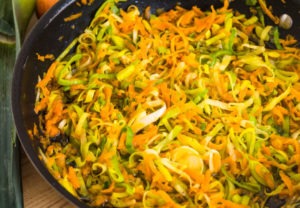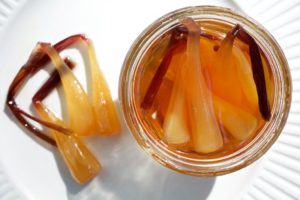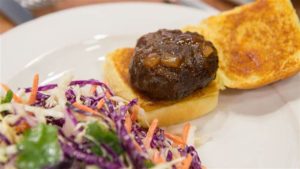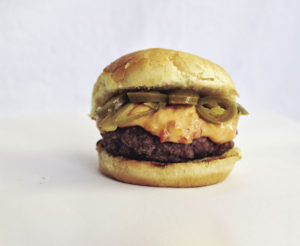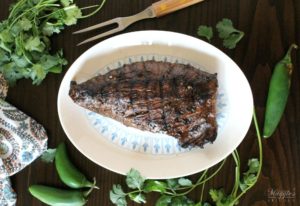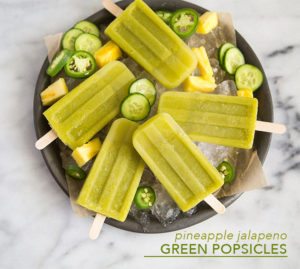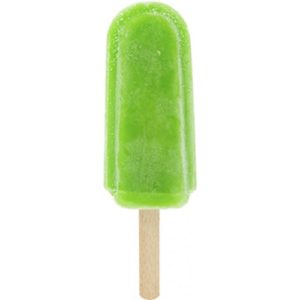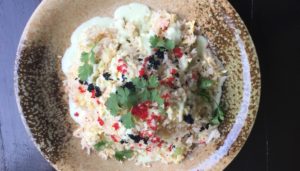Reprinted from the Milwaukee Wisconsin Journal Sentinel article at www.jsonline.com.
From store receipt to the walls of their kitchens
Sophie Papendieck, born in 1876,was known for these mustard pickles; the family believes they were sold in the meat market owned by her husband, William, in Sheboygan. The family lived above the store, where they raised their six children.
Lisa Gutoski of Sheboygan got the recipe from her 85-year-old mother, Patricia Papendieck, whose husband was Sophie’s grandson. The recipe was written by Sophie on a store receipt.
“My Dad, William Papendieck, was very proud of his heritage and this recipe,” Gutoski wrote. “One year for a Christmas gift he decoupaged a copy of this original pickle recipe onto bread boards and gave them to all 10 of his children (yes, 10 kids!). This bread board now hangs proudly in all of our kitchens.”
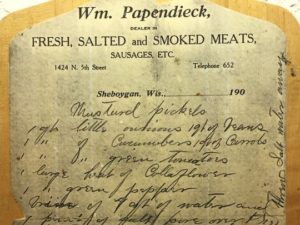
Sophie Papendieck recorded her mustard pickle recipe on a store receipt. (Photo: Courtesy of Papendieck family)
The recipe here was fleshed out from the original, which had very little in the way of instructions. It was also safety-checked and further revised for us by master preserver Christina Ward, who additionally cautions: “When making pickling solutions, always cook with the lid on the pot. Evaporation will cause the solution to go out of balance and become too salty, too sweet, or too sour.”
Makes 12 to 16 pint jars
Cucumber brine solution:
- 4 quarts water
- 2 cups 100% pure salt (see note)
- 1 quart sliced unpeeled cucumbers
Vegetable brine solution:
- 2 quarts of water
- 2 teaspoons 100% pure salt
Vegetables:
- 1 quart peeled, pearl-size white onions (can substitute chopped white onion)
- 1 quart chopped green beans
- 1 quart chopped peeled carrots
- 1 quart chopped green tomatoes
- 1 large head of cauliflower, cut into small florets
- 1 large green bell pepper, chopped
- (Note: All vegetable pieces should be uniformly cut to approximately ½-inch pieces)
Pickling solution:
- 2 quarts white distilled or cider vinegar
- 3 ½ cups sugar
- 6 tablespoons ground mustard powder
- 1 ½ tablespoons ground turmeric
Prepare cucumber brine solution in a large, non-reactive bowl. Place cucumbers into brine solution. Cover bowl with a light kitchen towel. Set aside on kitchen counter or table for 24 hours.
In a large, non-reactive stockpot, mix water and salt for vegetable brine solution. Stir over medium heat until salt is dissolved and solution begins to boil. Cover pot and remove from heat.
Place chopped vegetable mix in a large, non-reactive stockpot. Pour heated vegetable brine solution over vegetables. Bring to a boil over medium-high heat. Remove from heat, drain, and set vegetables aside.
Remove cucumbers from brine solution.
Make pickling solution: In large non-reactive stockpot, combine vinegar, sugar, mustard and turmeric. Bring to a boil while covered over medium heat, making sure that sugar is dissolved.
Remove from heat. Add cucumber slices and drained vegetables.
Ladle vegetable and pickling solution mixture into 12 to 16 clean pint canning jars. Add extra pickling solution from the pot to ensure that vegetables are completely covered and within the required ½-inch headspace. Poke down into jars to remove bubbles.
Put on lids and process in hot water bath 20 minutes.
Wait three weeks before using.
Note: Canning, kosher or sea salt all can be used — just be sure the label says 100% salt. Do not usetable salt.

